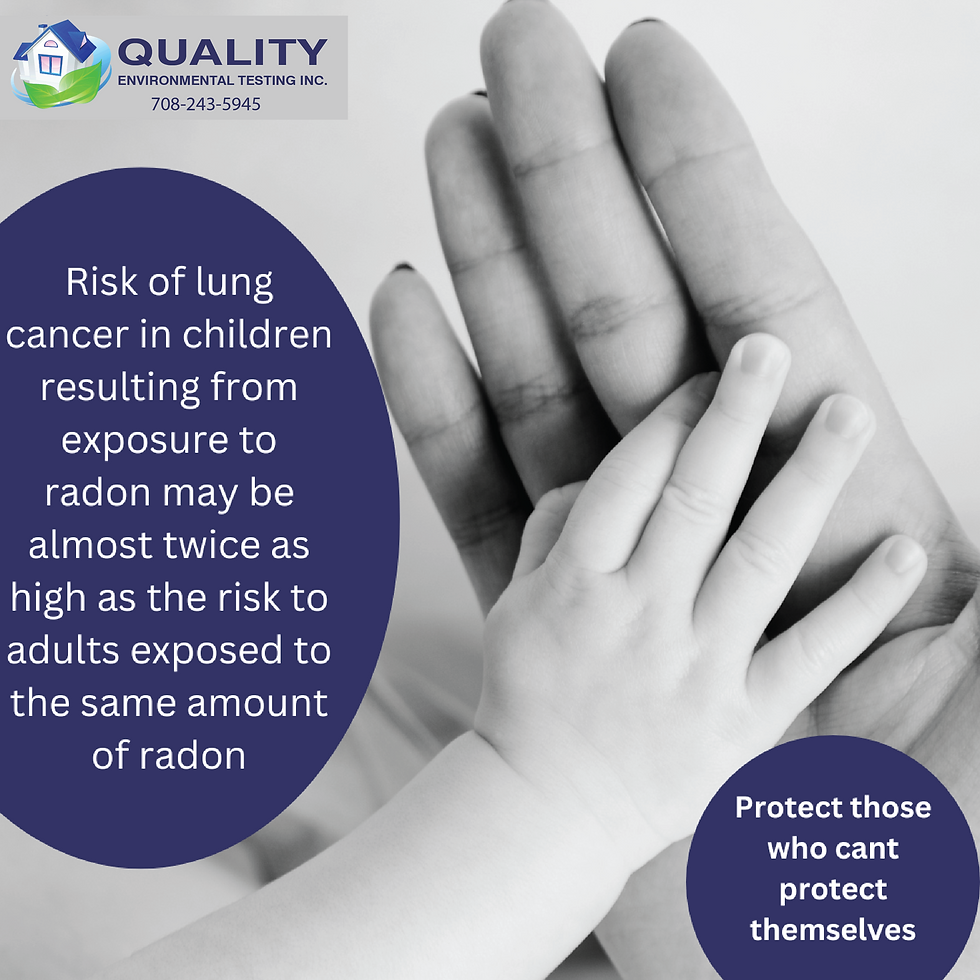PROTECT THOSE WHO CAN'T PROTECT THEMSELVES
- Feb 4
- 1 min read

Children are more vulnerable to radiation exposure from radon due to differences in lung shape, size, and function compared to adults. Their lungs are smaller, meaning that any inhaled radon and its radioactive decay products become more concentrated in a limited space. This results in a higher estimated radiation dose per unit of radon inhaled. Unlike adults, whose lungs have already fully developed, children's lung tissues are still growing, making them more susceptible to the harmful effects of radiation.
In addition to lung size differences, children have faster breathing rates than adults. This means they take in more air per minute, increasing their overall exposure to radon and its decay products. Since radon is a radioactive gas that seeps into homes from the ground, prolonged inhalation leads to an accumulation of radioactive particles in the lungs. These particles release radiation that can damage lung cells, increasing the risk of mutations and, ultimately, lung cancer. Because children inhale more air relative to their body size, their exposure to radiation is significantly higher than that of adults in the same environment.
The combination of increased radiation dose and faster breathing rates makes children nearly twice as likely as adults to develop lung cancer from radon exposure. Their growing bodies, particularly their lung tissues, are more sensitive to radiation-induced damage. Cellular mutations caused by radiation exposure are more likely to persist and develop into cancer over time. As a result, reducing radon exposure in homes, schools, and other indoor environments is crucial to protecting children's long-term health. Hire a professional to test and help you make your home safe.




Comments